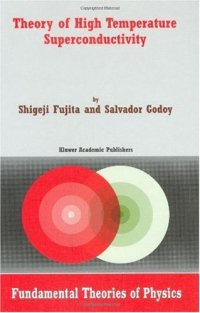
Ebook: Theory of High Temperature Superconductivity
- Genre: Physics // Solid State Physics
- Tags: Condensed Matter, Physical Chemistry, Statistical Physics
- Series: Fundamental Theories of Physics 121
- Year: 2003
- Publisher: Springer Netherlands
- City: Dordrecht; Boston
- Edition: 1
- Language: English
- djvu
Flux quantization experiments indicate that the carriers, Cooper pairs (pairons), in the supercurrent have charge magnitude 2e, and that they move independently. Josephson interference in a Superconducting Quantum Int- ference Device (SQUID) shows that the centers of masses (CM) of pairons move as bosons with a linear dispersion relation. Based on this evidence we develop a theory of superconductivity in conventional and mate- als from a unified point of view. Following Bardeen, Cooper and Schrieffer (BCS) we regard the phonon exchange attraction as the cause of superc- ductivity. For cuprate superconductors, however, we take account of both optical- and acoustic-phonon exchange. BCS started with a Hamiltonian containing “electron” and “hole” kinetic energies and a pairing interaction with the phonon variables eliminated. These “electrons” and “holes” were introduced formally in terms of a free-electron model, which we consider unsatisfactory. We define “electrons” and “holes” in terms of the cur- tures of the Fermi surface. “Electrons” (1) and “holes” (2) are different and so they are assigned with different effective masses: Blatt, Schafroth and Butler proposed to explain superconductivity in terms of a Bose-Einstein Condensation (BEC) of electron pairs, each having mass M and a size. The system of free massive bosons, having a quadratic dispersion relation: and moving in three dimensions (3D) undergoes a BEC transition at where is the pair density.
The book describes all basic experimental facts about high temperature superconductivity of materials, with a critical temperature of 30 Kelvin and higher, and explains them microscopically starting with a Hamiltonian followed by step-by-step statistical mechanical calculations. All important theoretical formulas are derived without omitting steps and all basic questions are answered in a manner which is easy to understand. The book is therefore suitable as a textbook for a second-year graduate physics course. Many fresh, and some challenging, ideas are presented and researches in the field are invited to examine the text.